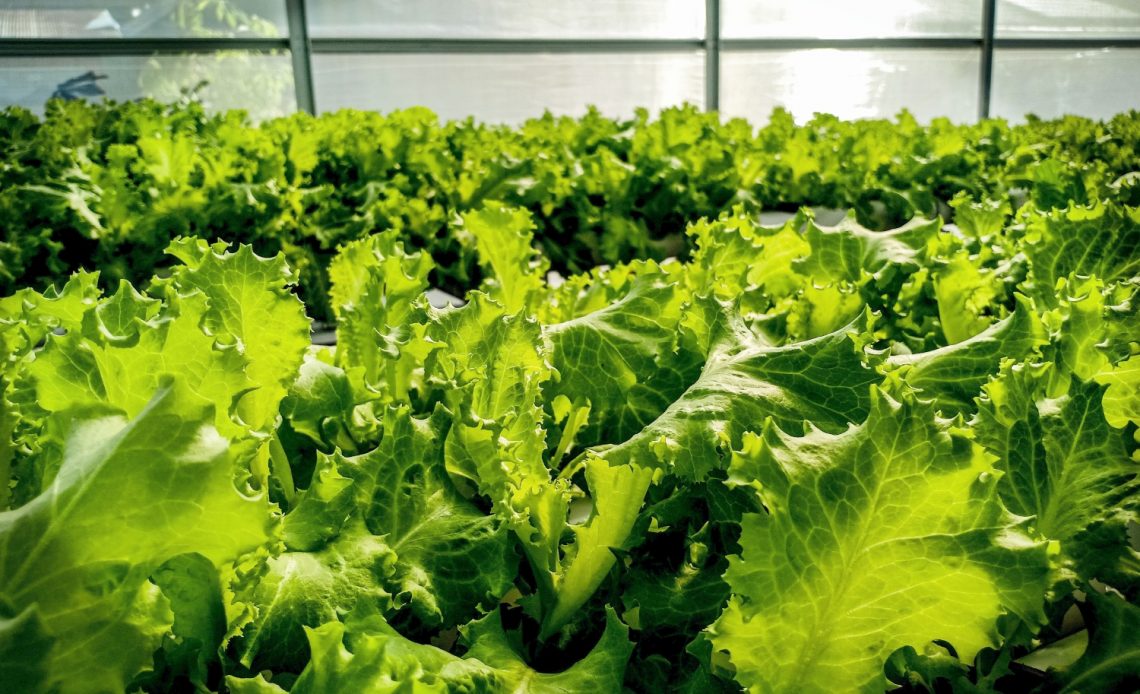

We’re here to help! Wild Yards is a completely free website that is 100% dedicated to helping you create a wildlife-friendly, sustainable yard. Read more
WildYards is reader-supported. When you buy a product through a link on our site, we may earn a comission. Every product is independently selected by our (obsessive) editors and our reviews are unbiased and objective. Read more about our mission or our privacy policy.
Fresh romaine lettuce straight from the garden is just the thing you need to make a fantastic salad.
It’s the perfect vehicle for all those tomatoes and peppers you grew, too.
Romaine lettuce is easy to grow, preferring full sun and loose, loamy soil that drains well, but can easily be kept moist.
Most gardeners grow romaine lettuce as a border for their raised garden beds where it’s easiest to harvest the heads once they’ve matured.
These leafy green veggies benefit from being fed high-nitrogen fertilizers, which give them everything they need to keep producing crisp green foliage.
Although there are no tricks to growing romaine lettuce, the real question is, how can you tell when to harvest romaine lettuce to bring to the table?
Romaine lettuce heads are typically ready to be harvested 60 to 75 days after sowing seeds. The lettuce will turn a deep green and the leaves will begin to open and spread out away from the center of the head.
When should you plant romaine lettuce?
Romaine lettuce is a cool-weather crop. Although it thrives when exposed to 8 or more hours of bright sunlight daily, it doesn’t like getting too warm.
Your romaine lettuce will perform best when the temperatures stay between 40 and 50 degrees Fahrenheit. Plant growth begins to slow between 60 and 70 degrees.
For spring gardens, plant your romaine lettuce in early spring, just after the last scheduled frost of the season. You can also plant romaine lettuce in your fall garden by starting the seeds in late summer.
Sow the seeds directly in the ground at a depth of ⅛” to ¼”, and be sure to keep the soil uniformly moist while the seeds germinate.
Once the seeds have sprouted, thin them out leaving 6” to 12” between seedlings, to give the heads plenty of room to spread out as they mature.
Alternatively, you can start your romaine lettuce seedlings indoors before transplanting them to your garden.
Plant your seedlings in peat seed pots and place them under a bright plant light. Seeds typically germinate in 7 to 14 days.
For spring gardens, plant your seeds 3 to 5 weeks before the last frost of the season. Once the final frost has passed, your seedlings will be ahead of the game when you transplant them into your garden.
For fall gardens, start the seeds indoors 8 to 12 weeks before the first frost of the season. Keep the seedlings outdoors as often as possible to harden them off. That way, they’re less likely to become shocked after transplanting.
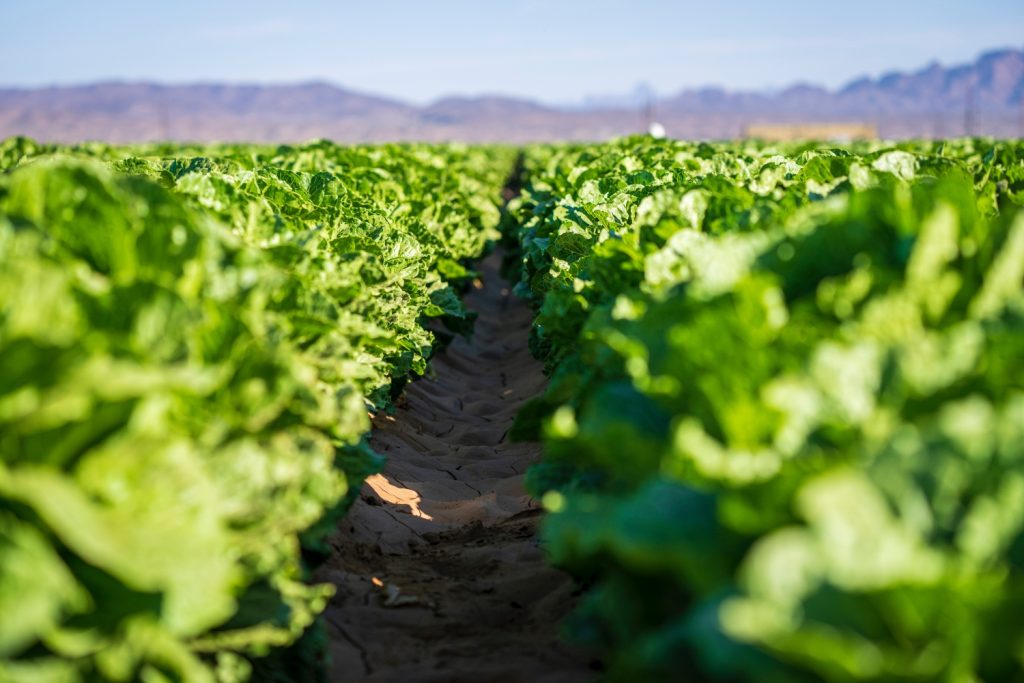
When should you harvest romaine lettuce?
How long it will take your romaine lettuce to mature depends on the variety. But in general, romaine lettuce is ready to be harvested 60 to 75 days after germination.
The young leaves will turn from bright yellow-green to a deeper shade of green. The leaves will begin to open slightly, folding away from the center of the head.
The heads themselves should measure roughly 6” to 12” tall with a circumference of 10” to 16”. Check the back of your seed packet to determine exactly how big your romaine lettuce heads will be at maturity.
Another clue that will help you determine when to harvest romaine lettuce is the ribs of the leaves. The ribs should be pale green. This indicates the leaves themselves are crisp and have higher sugar content.
If the ribs of the leaves have turned milky white, the lettuce will have a poor texture and a bitter taste.
Romaine lettuce is fast-growing, especially when conditions are ideal. Cool temperatures and plenty of sunlight accelerate this crop’s growth like nothing else.
If you’re not sure when to harvest romaine lettuce, it’s not exactly a hard science. It’s okay to harvest the plants a bit too early or a bit too late.
Many gardeners prefer to harvest their romaine lettuce before it has fully matured, as the leaves tend to be sweeter and crisper when they’re still young.
Harvesting the heads a little later may result in leathery and slightly bitter leaves. But the heads are still quite edible.
If you planted your romaine lettuce seedlings in early spring, the heads should be ready to harvest in early to midsummer. Seedlings started in late summer will be ready to harvest by early to mid-fall.
Mark on your calendar when you’ve sown your seeds so you can keep track of the days. That way, you can keep a close eye on the plants as you get near their harvest date.
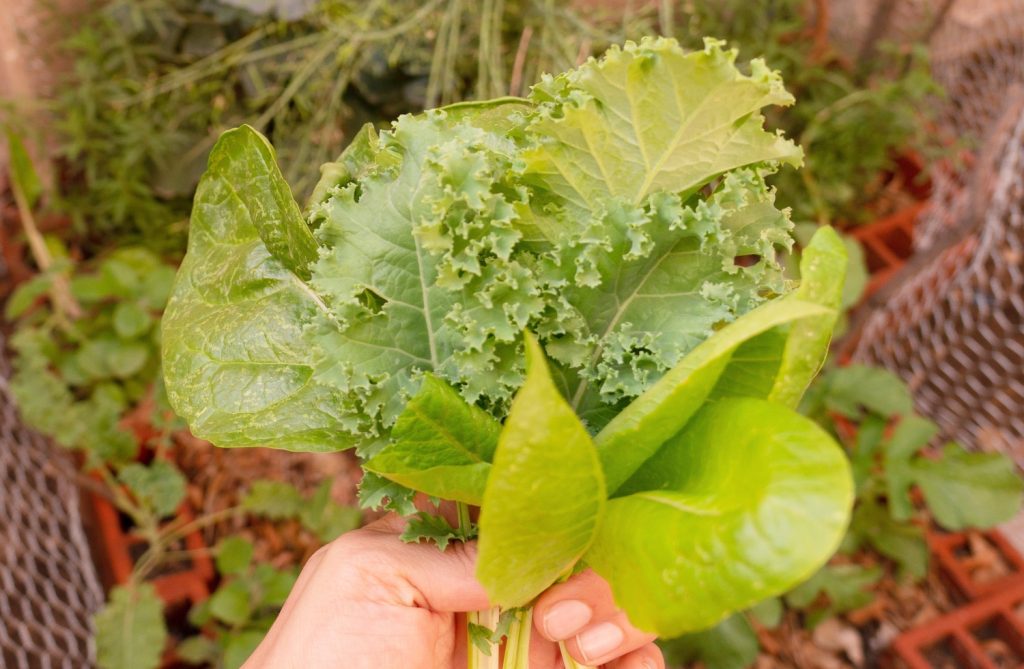
How to harvest romaine lettuce
Now that you have a better idea as to when to harvest romaine lettuce, it’s time to learn the proper way to remove the heads.
How you harvest your romaine lettuce will influence the plant’s ability to continue producing.
Accidentally harvesting too much of the plant can hinder its growth. If you stress the plant, it may not recover and continue to produce new foliage.
For this reason, many gardeners harvest only a few leaves of the plant at a time. You can trim individual leaves from the heads, leaving half or more of the leaves intact.
This makes it easy for the plant to keep growing. But if you’d rather harvest the entire head, that’s A-OK, too.
When you’re ready to harvest your romaine lettuce crop, grasp the head in one hand, and use sharp scissors to trim the leaves at the base of the plant.
Leave an inch of stem above the base of the plant. That way, the lettuce can keep growing. Refertilize and water the plants well after harvesting to promote new growth.
If the temperatures are still mild in your growing zone, the plant will continue to produce, and you’ll have more leaves to harvest in a few weeks.
Some gardeners choose to uproot the entire plant at harvest time. This is okay to do, especially if the temperatures in your region are heating up.
Once it gets too hot outside, your romaine lettuce will die anyway. And there’s no real point in allowing the roots to stay in the ground because romaine lettuce is an annual.
If you want to uproot your romaine lettuce heads, simply use a hand trowel to cut the roots, and gently wriggle the heads to loosen them.
How to store romaine lettuce
Knowing when to harvest romaine lettuce is one thing, but knowing how to store it is another.
Once you’ve harvested the heads, shake all of the loose dirt off them, and use your scissors to trim away the plant’s roots, leaving the base of the stem intact.
Store unwashed, uncut romaine lettuce heads in a cool, dry, brightly lit area. Bright light helps prevent the leaves from turning brown. The heads will stay fresh for up to 20 days.
You can also prepare the heads ahead of time by washing them and cutting them up to use later.
Use a sharp knife to cut the leaves away from the main stem. Next, run the leaves under cool water, scrubbing them gently with your fingers to remove dirt and debris.
Lay the leaves out on a tea towel and pat them dry. Then place them in a plastic Ziploc bag and store them in the crisper drawer of your refrigerator.
The lettuce will stay fresh for 7 to 10 days.
Consider placing damp paper towels in between the leaves. This helps keep the lettuce hydrated until you’re ready to use it.
Be sure to keep the bag unsealed to prevent excess moisture build-up, and turn the bag every day to prevent the leaves from getting crushed.
You can also store your romaine lettuce in the freezer. Simply wash the leaves, dry them thoroughly, cut them into small pieces, and place them into Ziploc bags.
Romaine lettuce can last up to 6 months in the freezer. Freezing romaine lettuce changes the texture, but it can still be used in cooked dishes and works fine for sandwiches, too.
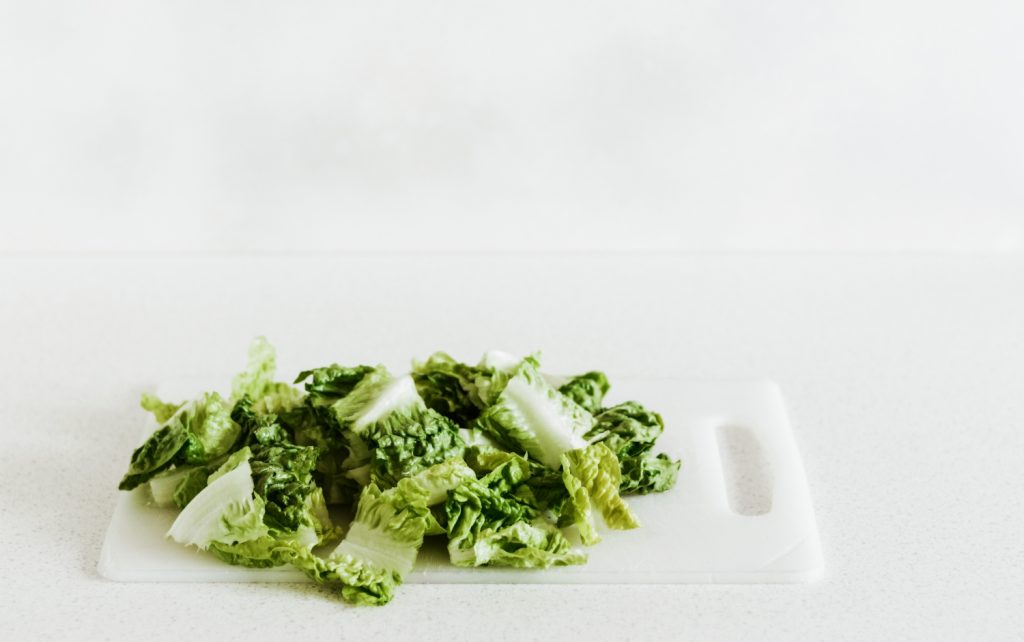
What should you do if your romaine lettuce starts making flowers?
In some cases, romaine lettuce will bolt, producing long flower stalks. This is usually in response to some kind of environmental stress. But it’s also an inevitable part of their growth cycle.
Like red onions, romaine lettuce is photosensitive. Although these plants love lots of light, when they receive too much sunlight, they may begin to flower.
Prolonged exposure to high temperatures and water stress can also shift the plant from the vegetative stage to the reproductive stage.
But even if all of the plant’s growing conditions have been met to a T, they can still bolt. It’s normal for lettuce to begin flowering and producing seeds.
Unfortunately, this can have a devastating effect on the quality of your harvest.
If your romaine lettuce is bolting, the leaves will become bitter as the plant begins diverting all of its energy to developing flowers and seeds.
If you notice your lettuce is starting to bolt, you have a few options. The first is to harvest the lettuce right away and use it immediately.
When plants bolt, this drastically reduces their shelf life. So you’ll need to use your romaine lettuce right away.
In some cases, removing the leaves and leaving an inch of stem will encourage the plant to produce more leaves so you can get a second harvest.
However, if this measure doesn’t work, you can uproot the bolted lettuce heads and dispose of them by adding them to your compost bucket.
This will free up some space so you can plant more lettuce, or something else entirely.
And the discarded plants will still be put to good use by providing future plants with valuable nutrients as they break down.
How can you prevent your romaine lettuce from bolting
Bolting is a natural part of the romaine lettuce lifecycle. After producing leaves, the plant will turn its attention toward producing flowers.
Romaine lettuce is an annual that must be propagated by seeds. So every romaine lettuce plant’s ultimate goal is to reproduce.
That said, there are a few things you can do to prevent your romaine lettuce from bolting, so you get more leaves to harvest.
Romaine lettuce is more likely to begin bolting when the mercury hits 75 degrees and keeps climbing.
Moving potted plants up onto your porch or patio will help keep the plants cool. This will help slow their growth rate a bit, preventing them from reaching their flowering stage.
Applying a layer of organic mulch around the plants also helps by keeping the soil cooler. Regular watering to keeps the temperature down as well.
You can also prevent your romaine lettuce from bolting by choosing bolt-resistant varieties (more on those in a bit).
Since plants rely on high-phosphorus fertilizers to produce seeds, feeding your romaine lettuce a high-nitrogen fertilizer, like blood meal, will encourage the lettuce heads to continue producing foliage, rather than flowers.
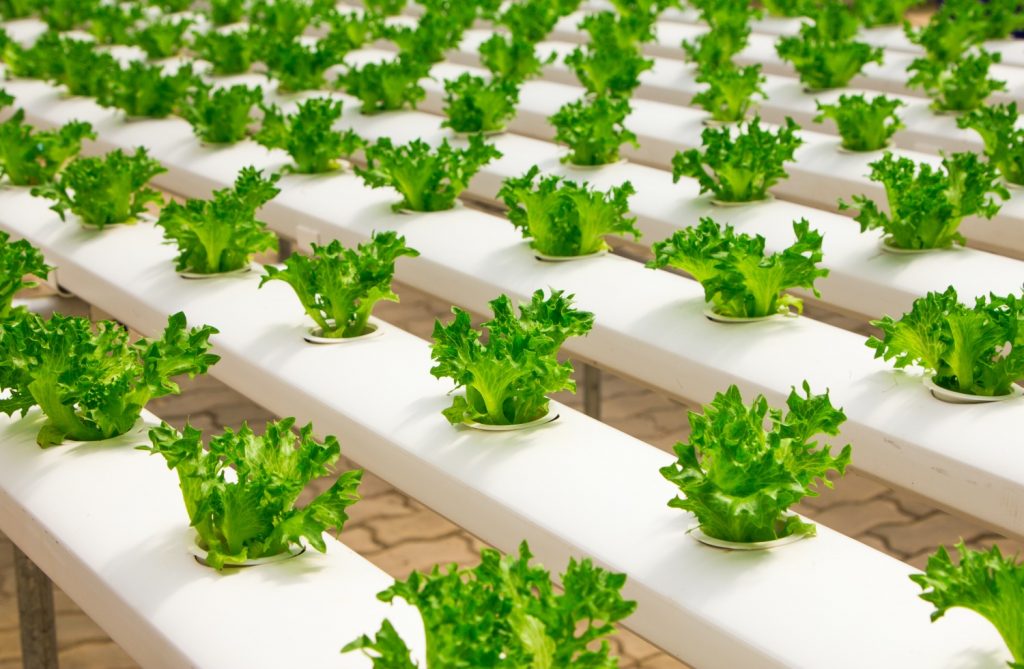
Are there any benefits to allowing romaine lettuce to bolt?
If you would like to harvest seeds from your romaine lettuce crop to start new plants next year, then you’ll need to allow one or two of your plants to bolt.
Only once the plants have flowered can they begin producing seeds. So leaving a few bolted romaine lettuce heads in your garden is okay.
It’s also worth noting that pollinators love visiting romaine lettuce flowers, especially sweat bees, which can help the plants produce more viable seeds.
Your local beetles, wasps, hoverflies, and butterflies will appreciate the extra source of pollen and nectar.
Attracting these insects to your garden supports healthy pollination of your other crops, resulting in a better harvest.
These bugs will also help keep damaging insects like aphids and spider mites at bay.
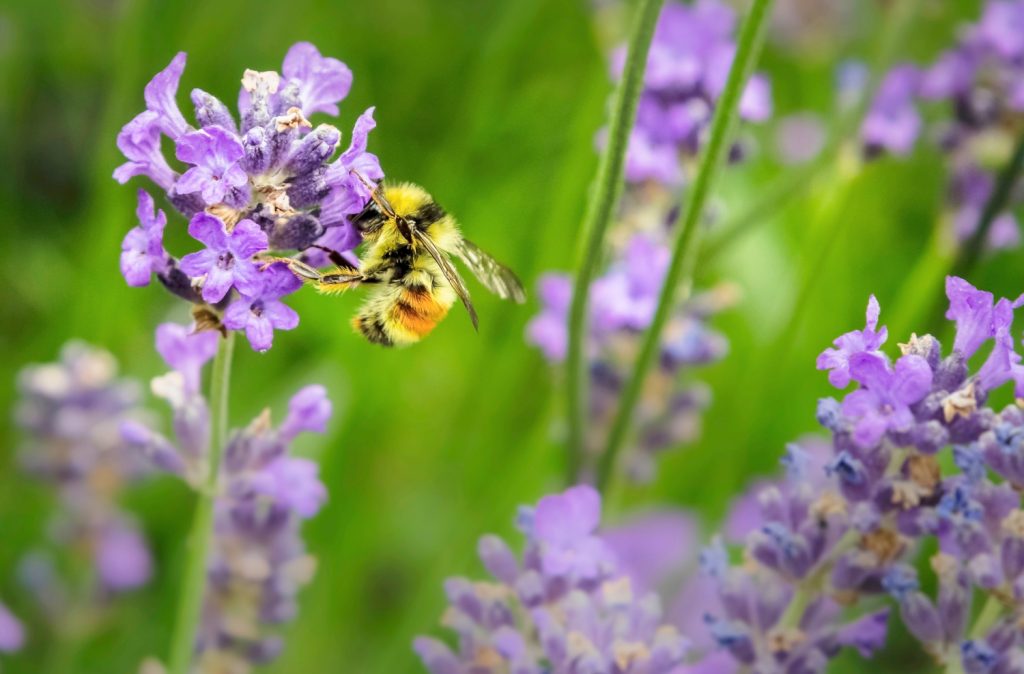
What are the best romaine lettuce varieties to grow?
One of the great things about romaine lettuce is that it’s super easygoing. But if you’ve never tried your hand at growing it before, you may be wondering which varieties are easiest to grow.
Little Gem romaine lettuce is an easy keeper, and its compact size makes it well-suited to container gardens and small beds.
Green Towers is also somewhat compact, producing long, linear heads that allow gardeners to plant more heads per square foot. This type of romaine lettuce sprouts easily and is ideal for beginner gardeners.
One of the primary challenges of growing lettuce is temperature. If you live in the south where the summers are hot, it can be difficult to produce a successful lettuce crop.
So look for Jericho romaine lettuce, which is a particularly heat-tolerant cultivar. Originally from Israel, Jericho is sweet and crisp and has what it takes to survive those high temperatures.
Salvius and Sparx romaine lettuce varieties are also more tolerant of warm climates. Gardeners prefer these butterhead cultivars because they’re also bolt-resistant.
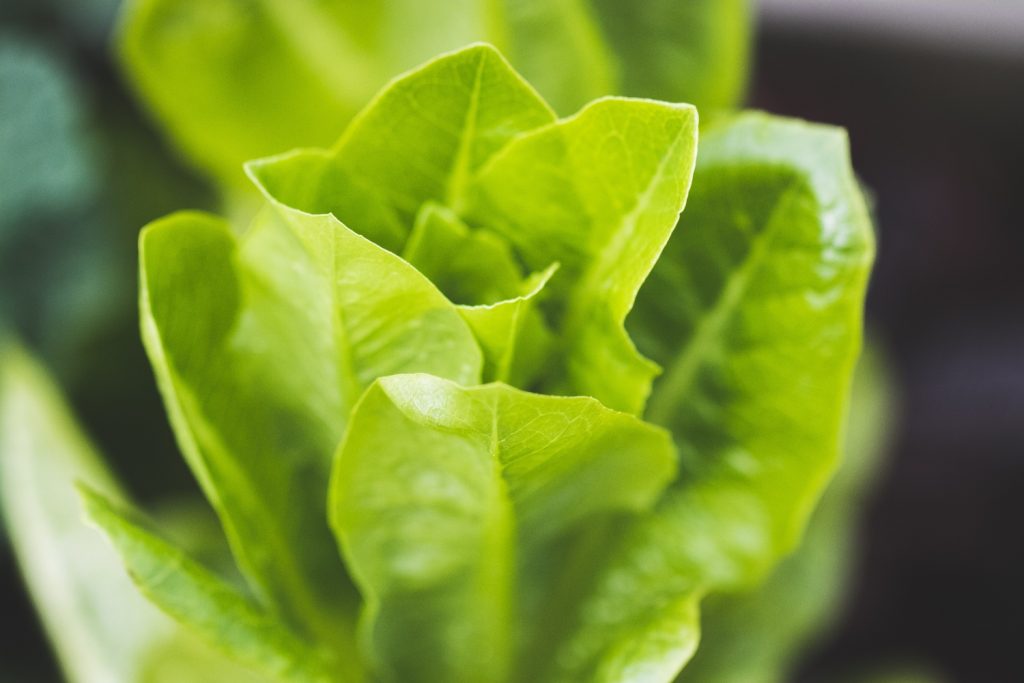
How to keep romaine lettuce healthy
Watch out for yellowing foliage. This is a sign of temperature stress, overwatering, underwatering, fungal disease, and/or insect infestation.
If your lettuce is getting too hot, move it to a shadier location, or use an umbrella to help keep it cool.
Regular watering will also help the plants stay healthy but never water the plants if the soil still feels wet an inch below the surface. Allow the soil to dry out a bit before watering again to avoid drowning the roots.
If you spot insects crawling around between the leaves, apply a homemade insecticide to your romaine lettuce. And if you find evidence of powdery mildew, a dilution of dish soap will help you spot-treat and eliminate the infection.
What are the best romaine lettuce companion plants?
Romaine lettuce grows well when planted near alliums, like onions and garlic. These sulfur-rich veggies help repel damaging insects that like to bore holes in lettuce.
Herbs such as dill, cilantro, and chives share similar growing requirements to romaine lettuce. And, like alliums, these strong-smelling herbs help ward off aphids, spider mites, and worms.
If you’ve had trouble with caterpillars in the past, use nasturtiums as a trap crop. This flowering plant’s large leaves keep moth and butterfly larvae away from maturing romaine lettuce heads.
Carrots and radishes are also excellent companion plants for romaine lettuce because these root veggies break up the soil, making it easier for romaine lettuce to take root.
Growing your romaine lettuce crop near the right companions improves the performance of both. So when you sit down to plan the layout of your garden next year, be sure to keep these garden buddies close together.
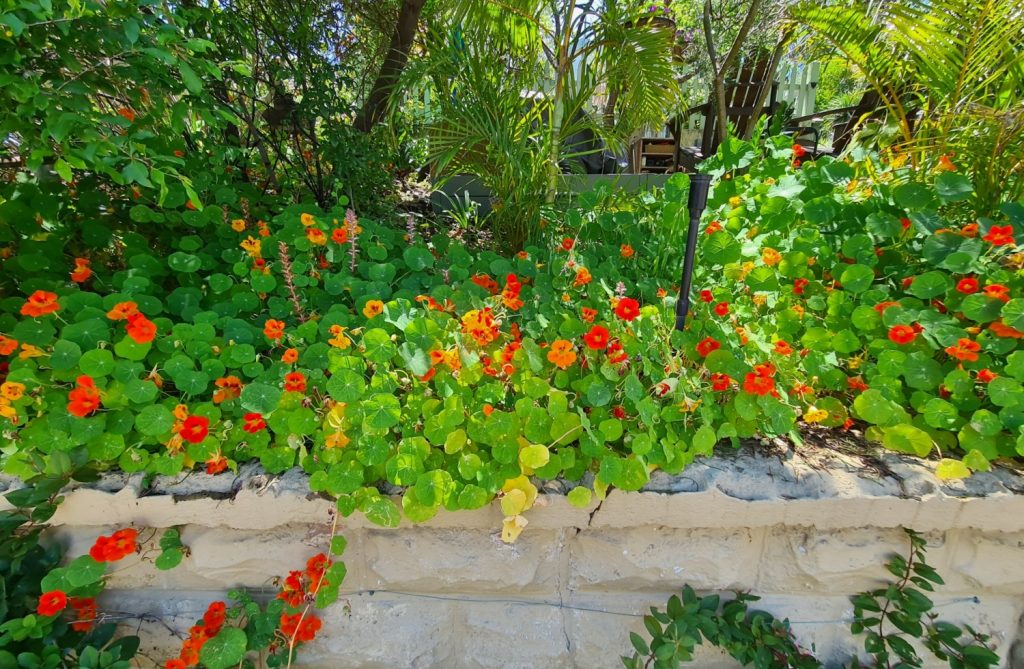
Tips for growing delicious romaine lettuce
There are a few other things you can do to ensure you grow romaine lettuce heads that are worth harvesting.
Start by preparing the soil before planting.
Amend sandy soils with compost and manure to add structure and make the substrate more nutritious. Meanwhile, horticultural sand should be mixed in with overly moist loamy soils to improve drainage.
Applying a layer of mulch will help keep the roots cool and hydrated. But it will also suppress weeds, saving you time and labor.
Cedar bark mulch is especially helpful when growing romaine lettuce, thanks to its camphor oil content. Camphor oil acts as a natural insecticide, so using cedar bark mulch will help keep pests out.
With a little careful preparation, you can grow tasty, crisp romaine lettuce, even on your first try.
